Iron Horse: how motorcycles were used in hostilities
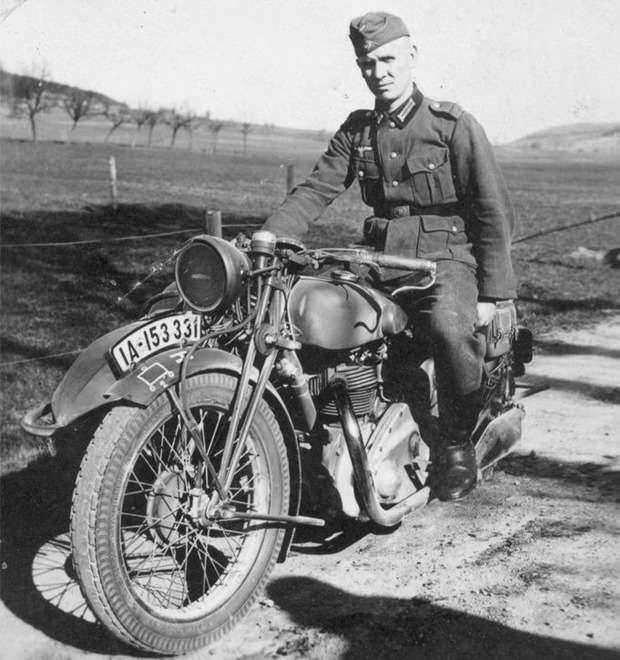
Since the taming of the horse and the invention of the wheel, the person has used all possible means of transportation for military purposes. Chariots, carts, cars. Not spared this fate and a motorcycle. We decided to understand the evolution of military motorcycles from the first models from the beginning of the XX century to the present day.
The first military "motorcycle" is considered to be the Frederick Sims Motor Scout presented in 1898. Palm in this case went to the British brainchild controversial, since the invention of Sims had four wheels, but for all other indicators it was just a motorcycle. Based on a bicycle frame and saddle, the Motor Scout Sims was equipped with a 1.5-engine engine from the French company De Dion-Bouton, a Maxim machine gun and an armored shield that protected the chest and the gunner’s head. In addition to the shooter driver, the Motor Scout could carry 450 kilograms of equipment and fuel, which was enough for the 120 miles to run. Unfortunately, due to the end of the Anglo-Boer War, the invention of Frederick Sima was not widely spread in the army.
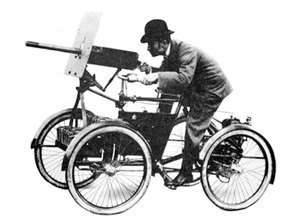
World War I
By the beginning of World War I, the idea of introducing motorcycles into the army had finally taken root in the minds of the commanders of all progressive countries. The main reason for this was quite a rational idea to replace horses with motorized equipment. It was because of this that couriers and soldier soldiers were the first to receive motorcycles in the army, but many armies did not limit themselves to just such use. The first motorcycles, reinforced by machine guns, appeared in the German army. Unlike the invention of Sims, they were modernized civilian motorcycles that did not have good armor. It is worth noting that attempts to create an armored bike lasted until the fifties of the 20th century, but did not lead to anything. Despite this shortcoming, the German "mobile machine gun points" were successfully applied in some operations on the fronts of the First World War.
The next step in the development of military motorcycle technology was the very logical appearance of mobile air defense. Aviation already ceased to be used only as reconnaissance and began to be used on a par with the rest of the equipment in hostilities. In this regard, there was a need to repel attacks from the air, for which large-caliber machine guns were installed on motorcycles.
Unfortunately, during World War I the bike was rarely out on the battlefield. His main occupation was the transportation of the wounded, the courier service and the expeditious delivery of various goods, including fuel for the rest of the equipment.
In the First World Motorcycle rarely went on the battlefield. His main occupation was the transportation of the wounded, the courier service and the prompt delivery of various goods.
Post-war fever
After the end of the First World War, all the participating countries, who appreciated all the advantages of motorcycles on the battlefield, began to develop new types of motorcycles. Many of them were too futuristic for their time. For example, in 1928, the French introduced the new Mercier motorcycle. Its main difference from other colleagues in the workshop was the front track wheel, which at that time seemed like a very fresh idea. Later, in the 1938 year, also a Frenchman, engineer Leatre, presented his motorcycle called the Tractorcycle. As the name implies, Leetre upgraded the 1928 model of the year, making his motorcycle entirely crawler. It would seem that light armor and high permeability should have made this model an ideal military motorcycle, however, there were a number of serious flaws: heavy weight (400 kilograms), low speed (with a 500 cubic centimeter motor, it developed a speed of only 30 km / h) and poor handling. Since the turn of the motorcycle was carried out by bending the track, the bike was extremely unstable when turning. Later Leetr added side wheels to his design, but the army was not interested in its development.
A non-standard model of a military motorcycle was created in Italy. The designers of the company Guzzi presented a tricycle equipped with a machine gun and the same armor-dressing, but the distinguishing feature of this motorcycle was that the machine gun was turned back and there was no possibility to deploy it.
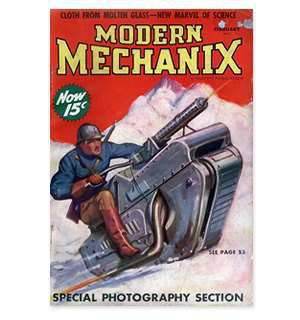
In Belgium, they also tried to create something original, and in 1935, concern FN succeeded. The Belgian designers presented a simpler model of an armored motorcycle M86. Compared to the rest of the European “colleagues”, M86 turned out to be successful: the motorcycle was equipped with a forced engine on 600 cubic centimeters, a reinforced frame, armor plates that closed the motorcycle and the driver on the sides and front. M86 could also carry a wheelchair entirely armored with an armored Browning machine gun. For all the time of production, about 100 of similar motorcycles were manufactured, which were in service with such countries as Romania, Bolivia, China, Venezuela and Brazil. Unfortunately, not a single instance has been preserved.
In addition to various ideas that were hardly adapted to life, the “ordinary” motor industry also developed. This was especially noticeable in Germany. After the end of the First World War, under the terms of the German peace treaty, it was prohibited to manufacture all types of weapons, but there was not a word about motorcycles. In this regard, in Germany began a real dawn of motobuilding. The main factor for the development of this sphere was that the average resident of a ravaged country could acquire a motorcycle, while the automobile remained the lot of the rich. That is what prompted BMW to switch from the production of spare parts for trains to motorcycles and to enter into a contest with the second largest motorcycle manufacturer in Germany, Zundapp.
Initially, BMW did not introduce anything new by installing the M2 В15 boxer engine on its motorcycles, which in fact copied the English Douglas engine, but by the year 1924 the engineers present the first production BMW R32 motorcycle created from scratch.
But as time went on, and from the beginning of 1930's, the Bavarian concern realized the need to create a specialized military motorcycle. That was the BMW R35. Unlike its predecessors, it had a telescopic front fork and a more powerful engine, the volume of 400 cubes. An important point for the army was the driveline, which was distinguished by high wear resistance relative to the chain. Of course, the R35 also had “old sores,” such as a stiff rear suspension. Sometimes, under heavy loads, the frame burst, but this did not prevent the R35 from becoming operational. This bike was a success in the infantry, motorized units and medical battalions, and the police. Production BMWR35 lasted until the year 1940, after which he gave way to highly specialized military motorcycles.
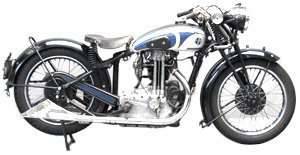

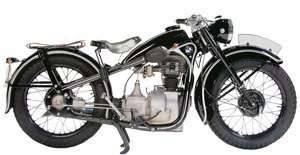
Simultaneously with the model R35, BMW produced the model R12. In fact, it was an improved version of R32. The motorcycle had an engine of 745 cubic centimeters and a telescopic fork with hydraulic shock absorbers, which made it a class higher than the R35. Creating a military version of the R12, one of the two carburetors was removed from the design, which reduced the horsepower from 20 to 18. Due to its low price and good performance, the R12 model has become the most popular motorcycle in the German army. From 1924 to 1935, 36000 of such motorcycles was launched. Like most BMW motorcycles, the R12 was produced as a “solo” or with a sidecar. Produced by the Royal company, she was curious because she did not have a single weld and had a specially designed spring for the careful transportation of the wounded.
The latest, but no less interesting motorcycle, in the branch of pre-war BMW was the model R71. Released from 1938 in four versions, he was the founder of the Soviet military motorcycle production.
In addition to BMW, the aforementioned Zundarr motogroup, which also carried out government orders, participated in the industrial race. Zundarr supplied three main models: К500, КS600 and К800. The model K800 with a sidecar was very popular among the soldiers. Due to its cheapness, they easily got into service, but of the entire branch represented by Zundarr, only K800 could compete with BMW R12. Also K800 was interesting because only this is the only four-cylinder model, which was in service in the German army. This feature was partly a disadvantage, since the rear cylinders of the KHNUMX were poorly cooled, which led to frequent oiling of the candles.
In Russia, during and after the First World War, there was practically no motorcycle production. This continued until the 1930-s. It was then, at the time of the technical re-equipment of the Red Army, that there was a need for a motorcycle of its own, which could bear all the Russian weather. The first domestic motorcycles specially developed for the army were the L300 and the KMZ 350. In fact, the KMZ 350 was a copy of the American Harley-Davidson, however, the Russian equivalent was much inferior to the Western motorcycle, and it was decided to give it up. He was replaced by TIZ-AM1931 manufactured from 600 of the year. This bike was designed and supplied only to the army. Being a combination of "Harley" and some British trends, TIZ-AM600 was a domestic development of the domestic auto industry, although not particularly outstanding.
In 1938, domestic design bureaus present several models at once: Izh-8, Izh-9 and L-8. The brightest and most successful among the presented motorcycles was the L-8. Relatively powerful overhead valve engine in 350 cubic centimeters was the pride of the domestic motorcycle. But despite the fact that the model L-8 was produced at once in several factories throughout Russia, the motorcycle did not meet all the needs of the army. This was due to the fact that each plant made its own amendments to the draft of the motorcycle, which led to the lack of unification in spare parts and turned into a serious problem in combat conditions.
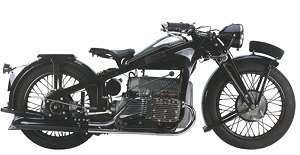
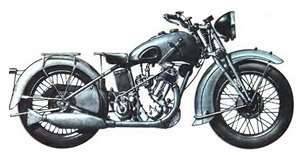
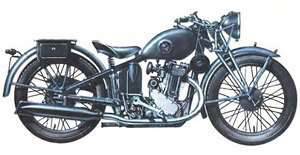
The Second World War
Kraftrad ("power wheel") - this is how the German army called motorcycles. It is from here that the abbreviation "Krad" or the letters "K" and "R" in the designation of some motorcycles appeared. But first things first.
With 1940, real reforms began in the German army. Despite the success of almost all pre-war BMW and Zundarr models, the command required a completely new class of manufacturers: heavy motorcycles. The first and only of its kind were two motorcycles: BMW R75 and Zundapp KS750. It was specially designed for off-road movement “plow horses”. Equipped with wheel drive wheels and a special off-speed speed, both motorcycles have proven themselves as well as possible. However, due to the high price, these motorcycles were supplied first to the African corps and parachute units, and after 1942, to the SS forces. Also in 1942, it was decided to release a new improved Zundapp KS750 motorcycle with a BMW 286 / 1 stroller, but, unfortunately, this model did not manage to see the light. Its production was to begin after the fulfillment of the order for the production of 40 thousands of R75 and KS750, of which only 17 thousands were produced during the entire war.
Something completely new for the German army was the semi-tracked motorcycle Sd. Kfz. 2, known as Kettenkrad. Launched from 1940 to 1945, Kettenkrad was designed to move light guns and was more of a tractor than a motorcycle. Inside this model was a half-liter engine from Opel. In total, during the war years, 8733-like units were produced, which were mainly delivered to the eastern front. Tracked traction coped well with the Russian impassability, but they also had their drawbacks. Kettenkrad often turned over on sharp turns, but because of the landing system, the driver could not quickly jump off the bike. Also on Sd. Kfz. 2 was impossible to drive on a hill diagonally.
Despite the success of almost all pre-war BMW and Zundarr models, the command required a completely new class of manufacturers: heavy motorcycles.
There is a legend about the appearance of a full-fledged motorcycle in the Russian army: When all the newest motorcycle developments of almost all countries were presented to the Armored Forces Committee in 1940, one of the high-ranking military officials asked: “What are the Germans attacking?” In response, they pointed out BMW R71 . From that moment began the development of the motorcycle M72. The first batch of these motorcycles came off the assembly line in July 1941, after the invasion of German troops into the USSR. The M72 actually did not differ from the R71: it had a simple design, an opposed lower valve engine providing a low center of gravity, with 22 L power. with., duplex tubular frame using variable cross-section tubes, front fork with hydraulic shock absorbers, universal drive rear wheel and powered by each cylinder from a separate carburetor. Of course, the bike was not fast (the maximum speed of the M72 is 90 km / h), but with high torque, which was a great advantage for the military vehicle.
BMW R71 impressed and American designers. So, the two-cylinder engine R71 with a four-speed gearbox and a drive shaft drive to the rear wheel of the American production "planted" on the classical basis of the company Harley-Davidson, while receiving a new motorcycle Harley-Davidson 42XHA. Basically this bike was used in North Africa. At the same time, the Harley-Davidson WLA42 got up on the conveyor. The military motorcycle WLA42 was a descendant of the civilian Harley-Davidson WL and differed from its "peaceful brother" only with reinforced wings, an air filter with an oil bath and other crankcase breathers, which did not allow dirt to get into the engine. Also on it were installed the trunk, leather trunks and holster for the machine Thompson М1А1. Inside, the motorcycle had a V-shaped two-cylinder engine on 740 cubic centimeters, which allowed it to develop an impressive speed for that time in 110 km / h.
WLA42 was supplied to the Soviet army, where it was often put on a stroller from domestic models. However, the Americans supplied the Allied armies and other motorcycles, such as the Indian, the 741 Military Scott and Harley-Davidson WLA45 models.
The military motorcycle WLA42 was a descendant of the civilian Harley-Davidson WL. It differed from its “peaceful brother” by reinforced wings, an air filter with an oil bath and other crankcase breathers, which did not allow dirt to get into the engine.
Army bikes after the war
After the end of World War II and the final cut of Germany between allied countries, BMW R35, produced by the Germans from 1935 to 1940, re-entered the arena. In the Soviet occupation zone, the R35 release resumed in the city of Eisenach in 1946. Of course, the bike was modified and modified. It changed the electrical equipment and power system, as well as added a rear suspension. That is how he began to enter the USSR. Powerful and unpretentious, he was in great demand. Approximately the same thing happened with the rest of the bikes of World War II. They were repainted and changed, but the essence remained the same.
A major novelty was the IMR-1995 “Ural” shown in 8.107 year, which is still in great demand. Equipped with a Gear-Up stroller, this motorcycle is a derated version of the civilian IMZ-8.017. This bike can be equipped with a machine gun, which makes it an excellent example of military moto production.
Army Harley-Davidson with the two-stroke single-cylinder Rotax engine on 350 cubic centimeters is also popular now. This model is widely distributed throughout the world and is used as a motorcycle intelligence or escort. However, like most modern military motorcycles, the Harley has a flaw: it uses JP-8 fuel. JP-8 is more like a mixture of aviation kerosene with diesel fuel, which makes it unsuitable for use with conventional gasoline engines. But there are exceptions. For example, the HDT M103M1 motorcycle, based on the well-known Kawasaki KLR650, uses simple diesel fuel, which is an indisputable advantage. Also, this bike boasts high efficiency. With an average 55 speed of miles per hour, he passes 96 miles per gallon of fuel.
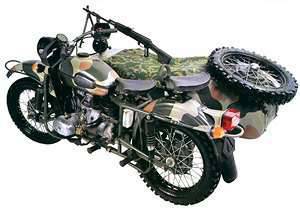
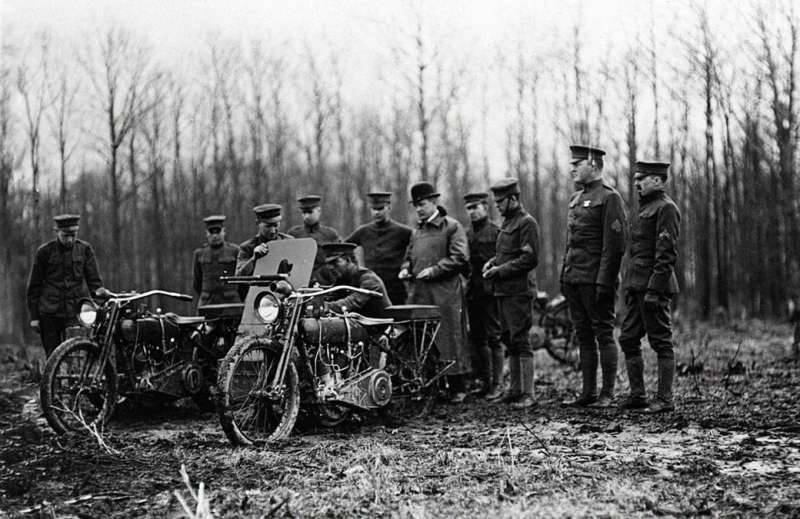
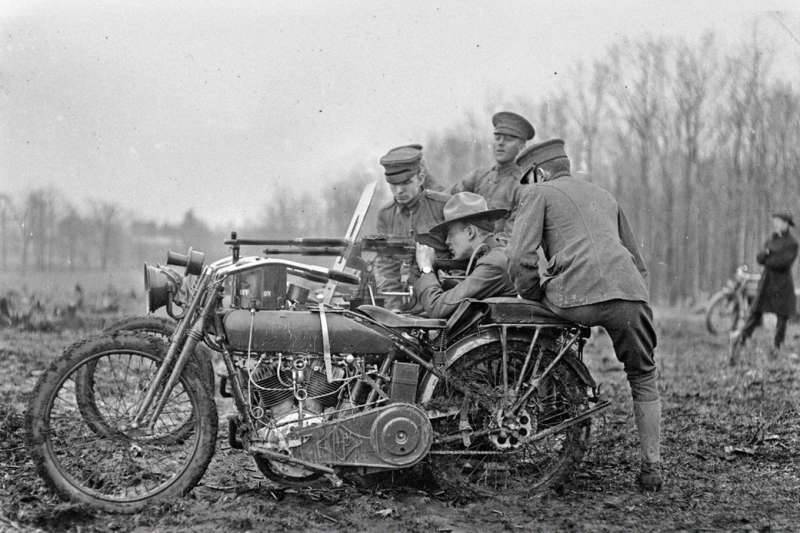
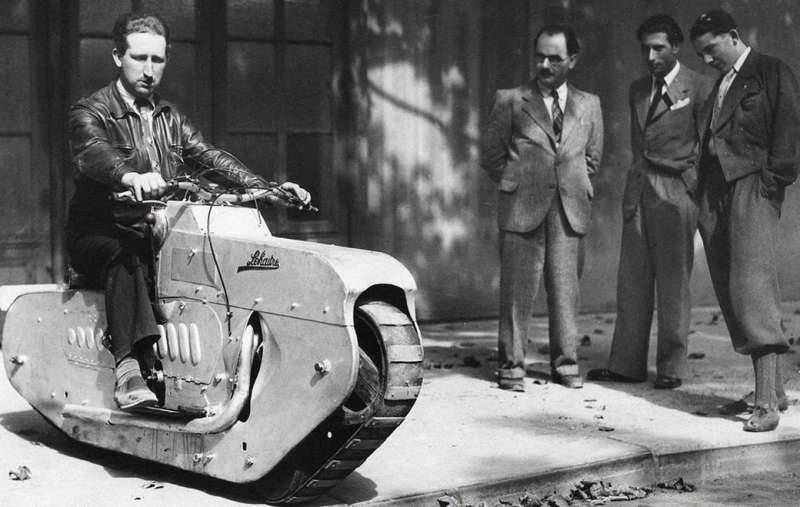
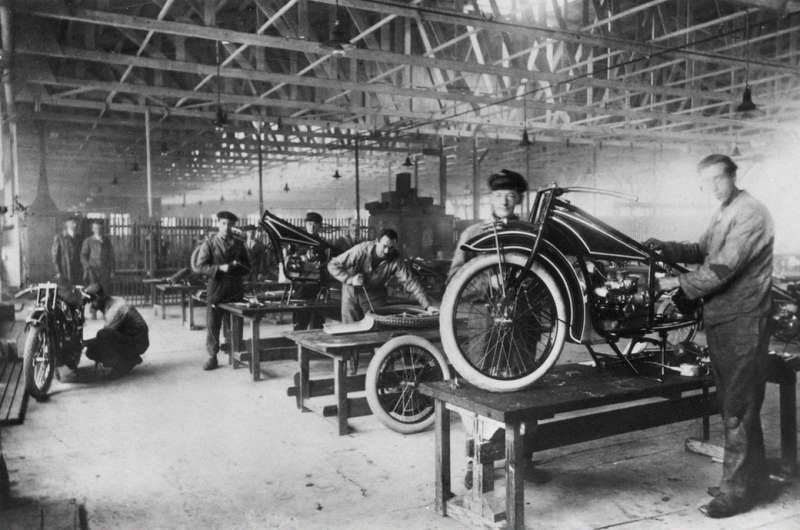
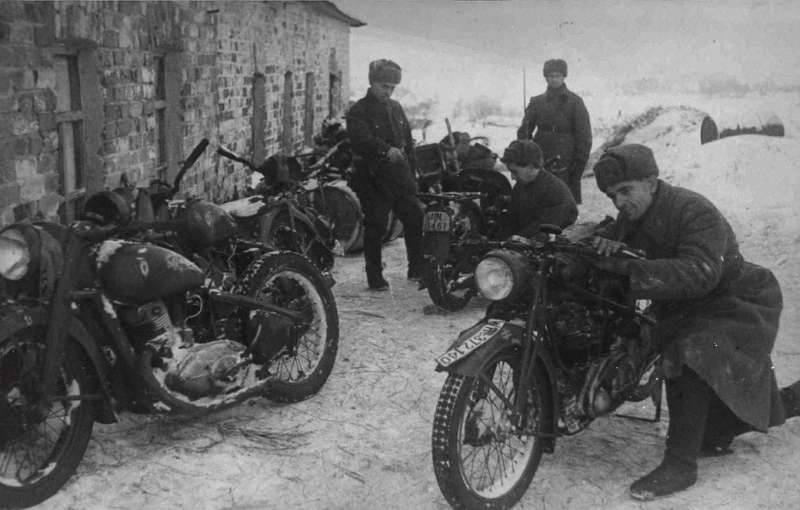
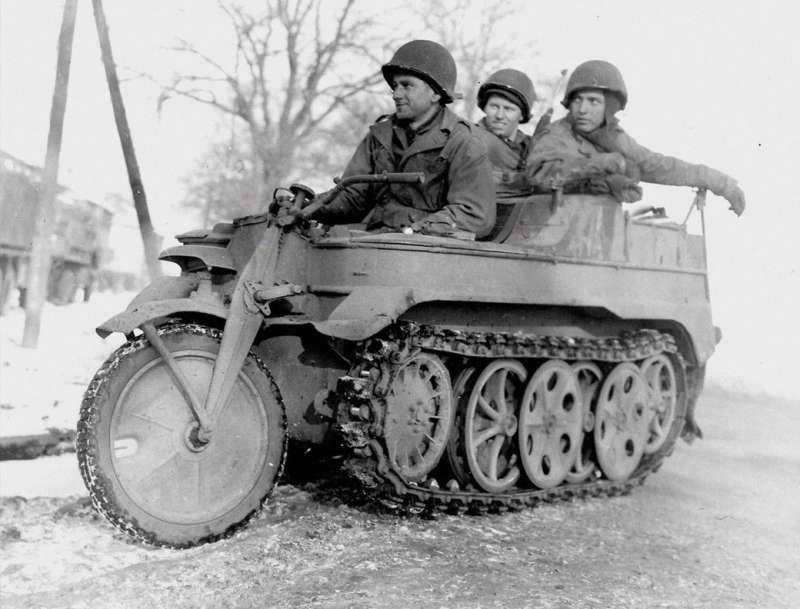
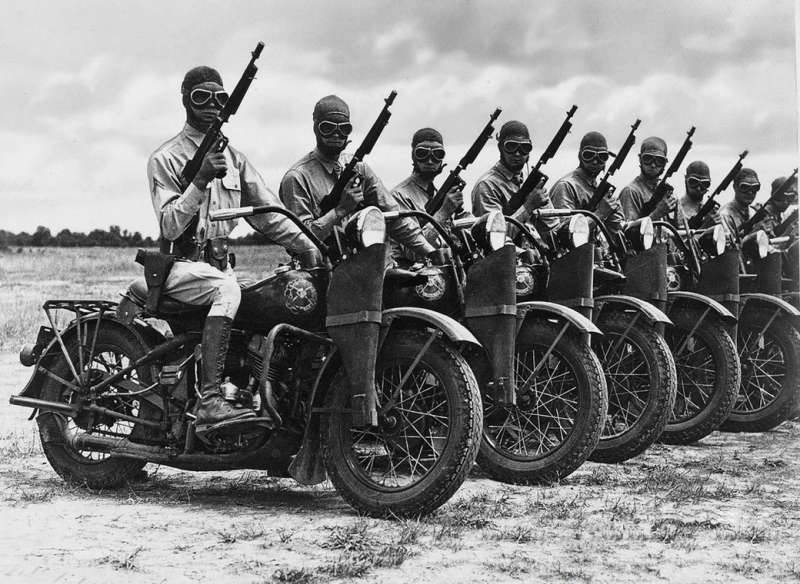
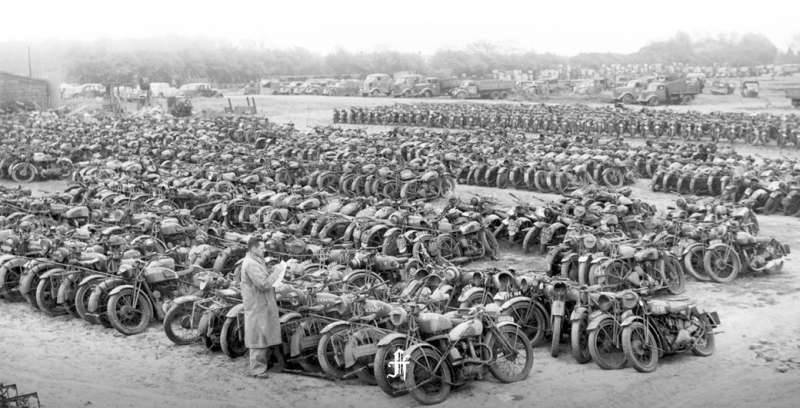
Information